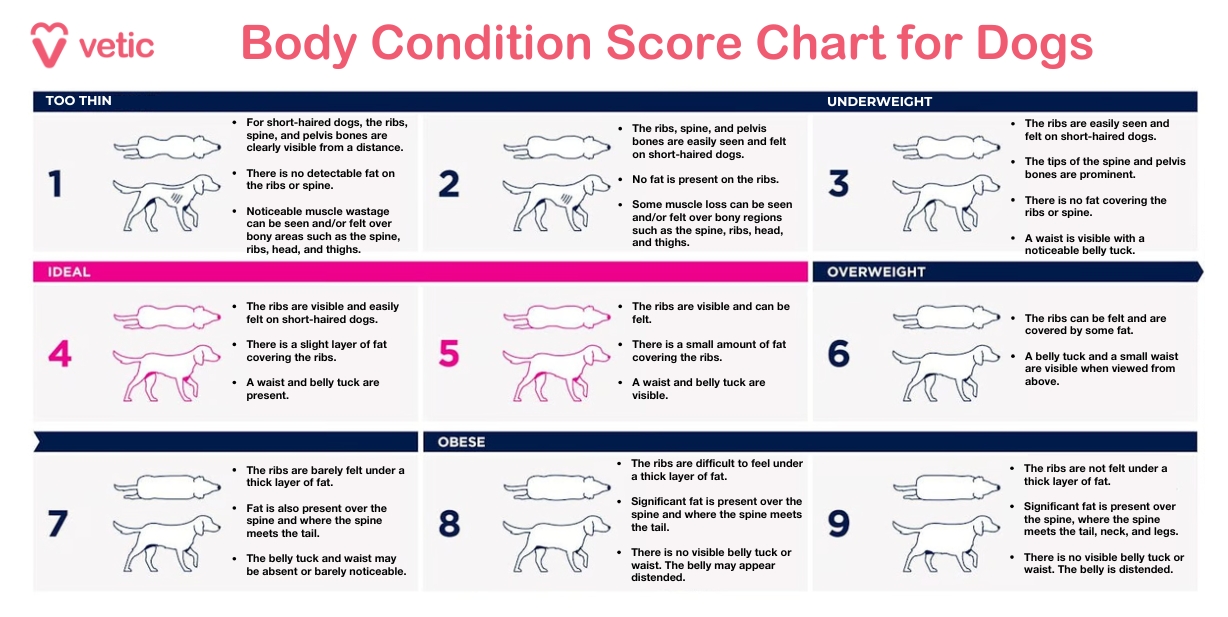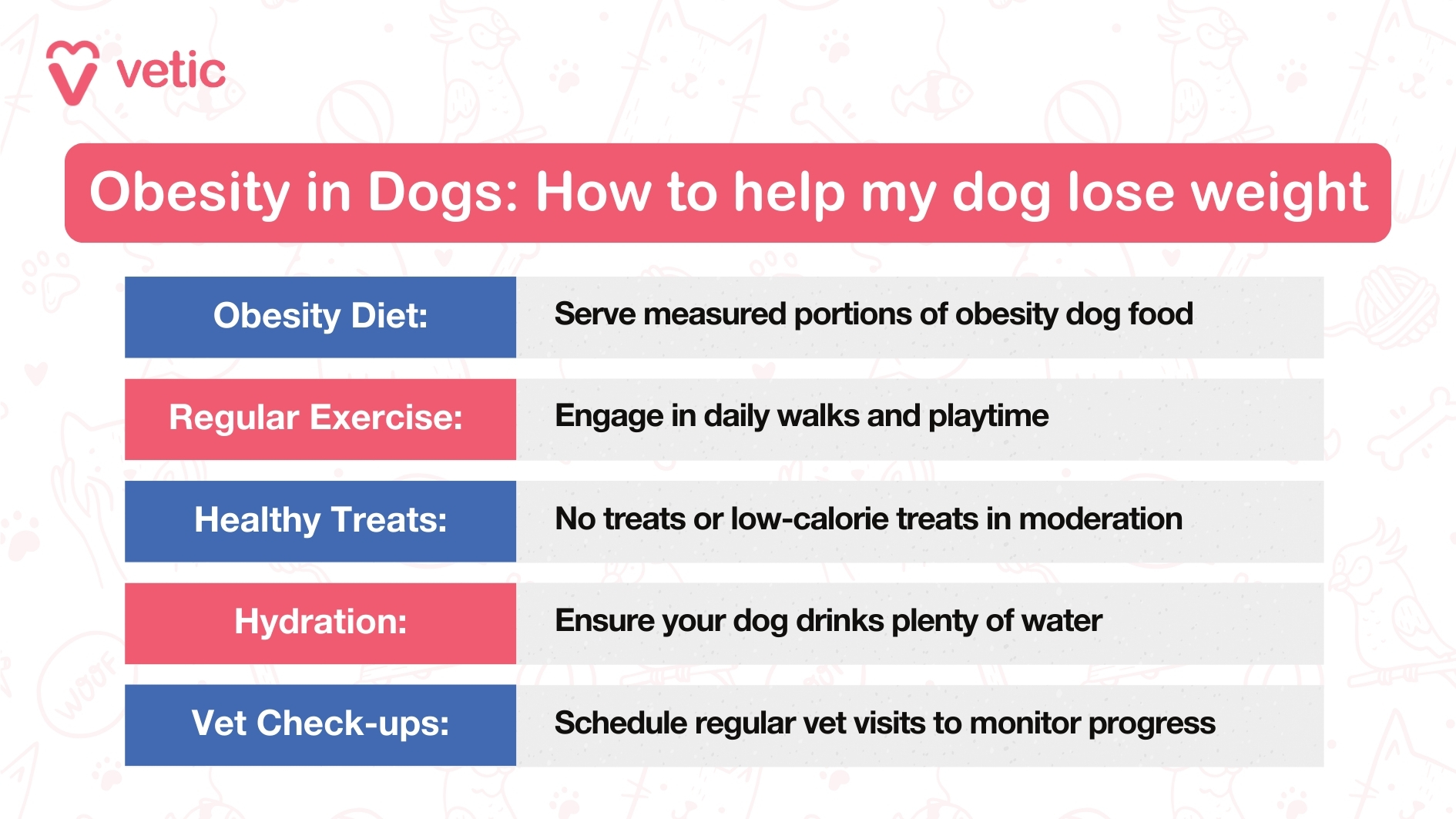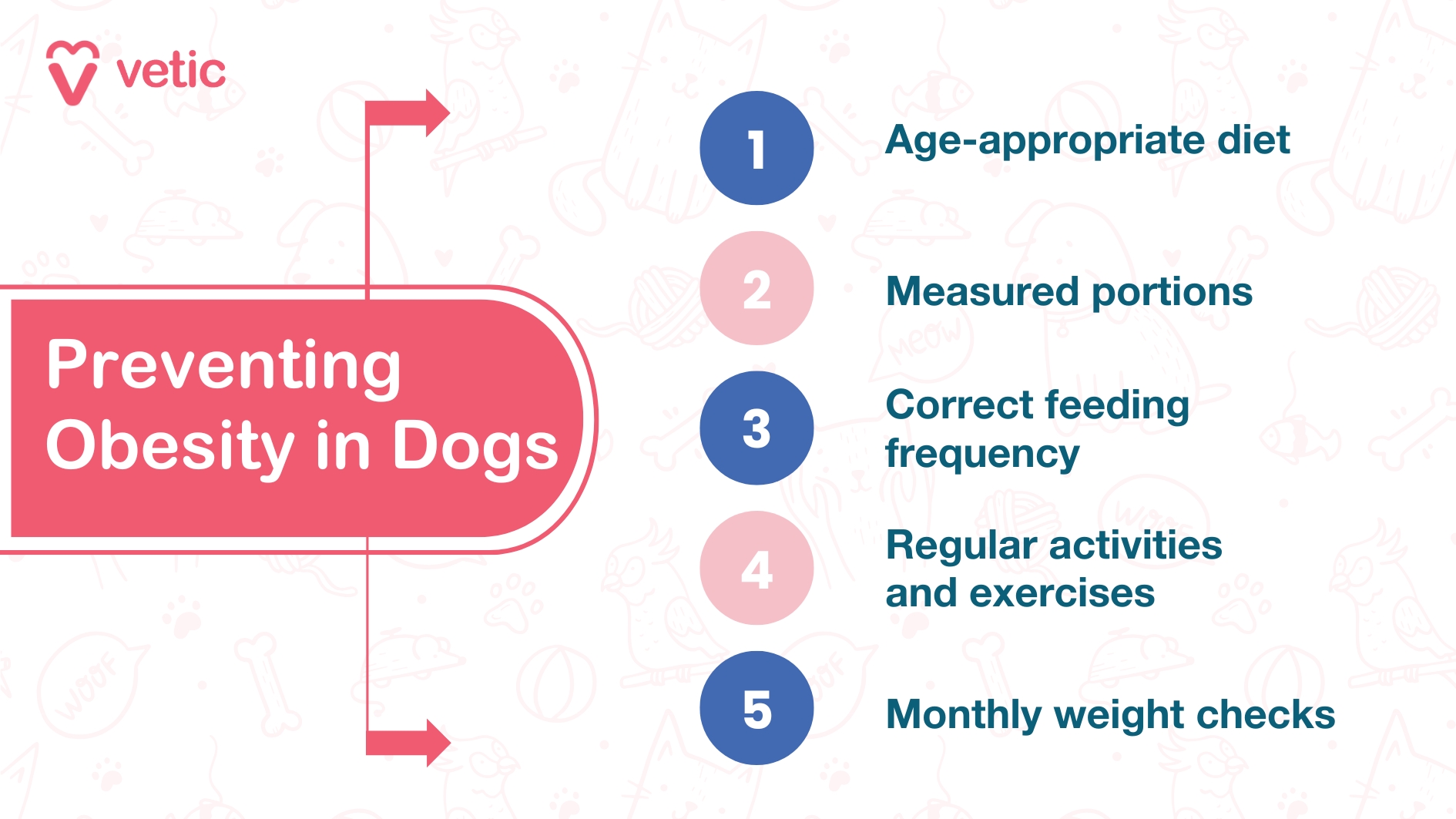Obesity in dogs is the most common disease affecting our four-legged friends globally. It was already known that obese dogs are more prone to health issues including arthritis, heart and liver problems, diabetes, and cancer.
However, most recent studies show that excess fat is the cause of pain and swelling of multiple joints leading to the reduction in the overall health and quality of life of these dogs. The fat cells secrete chemical signals that can cause inflammation directly. It is a part of the pain commonly associated with osteoarthritis and joint degeneration.
Research shows that morbidly obese dogs may have shorter lifespans from all the complications caused by the excess fat deposits. Dogs who manage to shed the extra kilos have a higher quality of life and better longevity.
What is Obesity in Dogs: Is Your Dog Obese?
The only way to deal with obesity is by recognising whether your pet is obese. Remember, the best person to guide you is your veterinarian – who can examine your pet and determine their body condition score.
However, you can try this simple exercise at home to understand if your dog is obese.
- When you look from above, does your dog’s waist (area between chest and hips) bulge out, curve in or look straight? If it bulges out, your dog is likely overweight.
- When you look at your dog from the side, does their tummy curve downwards, go straight or go upwards? If it droops downwards, your dog may be obese.
- Run your palm across their ribs and hips. Can you feel the bones easily? Or is it difficult to find their ribs altogether? If you cannot feel the ribs, you may be dealing with obesity in dogs.
You can also refer to the following chart for small, medium and large dogs to look for the image that represents your dog’s body condition the best.

Any dog with a body condition score of 4 or 5 is considered healthy. Dogs with body condition scores 3 or below are considered underweight and those with a score of 6 and above are considered overweight.
If your dog has a body condition score between 7 and 9, your dog is indeed obese. You should speak with your veterinarian and formulate a weight loss plan for your dog. This means, any dog whose weight is 20% more than their ideal weight is considered obese as per veterinary medicine.
Will Diet Reduce Obesity in Dogs: How to Help My Dog Lose Weight?
Reducing their food quantity might seem like the best option, but our veterinarians can assure you it isn’t! Reducing the quantity of food can starve your dog of necessary nutrients.

The smart way is to introduce a less calorie-dense diet that has all the necessary proteins, vitamins, minerals, fatty acids, fibres and complex carbohydrates. While cooking up a meal like this every day can be quite the task. You can always opt for the prescription weight loss diets that vets recommend across the globe.
These prescription diets are not just food. They are the most important part of the treatment plan. So, it is necessary to give your dog a fixed quantity per day at a specific frequency for the best results. Ideally, your dog should lose only 0.5% to 2% of their body weight per week .
Why Choose Packaged Food to Combat Obesity in Dogs?
Packaged weight loss food for dogs has fewer calories, but they have all the essential nutrients in the recommended daily quantities.
Once you find a food that your dog appreciates and helps in their weight loss, you can stick to it for as long as a few months or even years without the fear of deficiencies, digestive problems or weight gain.
Since packaged food already contains all the necessary vitamins and minerals, your dog won’t require supplements unless they already have some deficiency diseases.
Sticking to one food at a given quantity and frequency always helps track your dog’s weight loss. If you notice a sudden spike or dip in their weight, your veterinarian can rule out overfeeding as the cause. It becomes much easier to track your dog’s overall health when their source of nutrition is well-defined and maintained.
My Dog Has Reached Their Target Weight. Should I Discontinue Their Obesity Diet?
Was your dog overweight because of overeating or overfeeding? Then you already know how much food and how many calories your dog needs. There is no reason to discontinue their current diet.
If your dog has gained weight due to hypothyroidism, diabetes, or Cushing’s disease, then you must not make any changes to their diet without consulting your veterinarian.
It is indeed amazing that your dog has reached their ideal weight. However, changing their diet drastically can cause them to gain weight again, and make their co-morbidities worse.
Can I Prevent Obesity in Dogs?

Prevention is obviously much better and even easier when it comes to obesity in dogs. You need to start early, but today is never late!
You should keep the following in mind –
Give them an age-appropriate diet
Puppies and dogs require different food. Always feed puppy food to puppies only. Puppy food is too calorie and nutrient dense for dogs. If you continue to feed your dog puppy food, they will gain weight rapidly.
Always pick breed-specific food for your dog or pup from the very beginning. Get a proper diet chart from your veterinarian including how much treats you can feed your pet.
Feed measured portions
Portion control is the biggest issue when it comes to puppies and young adult dogs, especially breeds like Labrador Retrievers, Golden Retrievers, and Beagles.
If you are feeding commercial dog food, you should follow the instructions on the label of the bag or can. Or, ask your veterinarian how much you can feed at what frequency daily.
Pick a feeding frequency and stick to it
Very young puppies may require feeding 4-5 times. Whereas, adult dogs may require 2 meals a day.
Specific meal times can minimize scrounging behaviour and help set your dog’s digestive system, and toilet habits.
Plan activities and exercise for your dog
Not everyone has access to personal pools or dog pools. However, swimming is one of the best exercises for medium and large breeds.
Nonetheless, pick at least two particular times for walking and exercising your dogs. You can play fetch with your dog, run or create a game of hide and seek treats inside your house.
Ask your veterinarian how much your dog can exercise since exercise tolerance depends on age, breed and specific health conditions.
Keep checking their weight
If they don’t have any pre-existing health conditions that impact weight gain or loss, you should check your dog’s weight every month.
You can ask help from your vet, since they can also give your dog their updated body condition score along with any changes in their weight and activity levels.
Minor changes can be made by the doctor if your dog’s weight is going up or down. It’s always easier to make small changes in their diet as compared to making drastic changes when obesity in dogs sets in.
Obesity in Dogs: What Did We Learn Today?
Obesity in dogs is when your dog’s weight is 20% more than their ideal body weight. Obesity or excess fat can trigger pain and inflammation which are classic parts of arthritis in dogs. Since obesity and its related complications are much easier to prevent than cure, you should follow a strict veterinarian-recommended diet for your dog.
However, if your dog is already obese, you will need a weight-loss diet (prescription food) along with a suitable exercise regime recommended by your veterinarian. Obesity in dogs is not to be taken lightly, no matter how cute chubby dogs look. The cuteness comes at the expense of their joint health and longevity.
FAQs About Obesity in Dogs
1. Can obesity in dogs affect their breathing?
Yes, obesity can lead to respiratory issues like difficulty breathing or snoring due to fat deposits restricting airflow in the chest and throat.
2. Does obesity increase anesthesia risks in dogs?
Yes, obese dogs face higher anesthesia risks because excess fat affects breathing, blood circulation, and the metabolism of anesthetic drugs.
3. Can obesity in dogs lead to behavioral changes?
Yes, obese dogs may become lethargic or irritable due to discomfort, joint pain, or frustration from limited mobility and decreased activity levels.
4. Do certain dog breeds have a higher risk of obesity?
Yes, breeds like Labradors, Beagles, and Dachshunds have a genetic predisposition to obesity due to slower metabolisms or higher appetites.
5. Can obesity affect a dog’s immune system?
Yes, obesity weakens the immune system, making dogs more prone to infections, delayed wound healing, and reduced disease resistance.
6. Is obesity linked to cancer in dogs?
Yes, excess fat increases inflammation and alters hormone levels, which may contribute to the development of cancers like mammary tumors or lymphoma.
7. Can obesity in dogs cause digestive problems?
Yes, obesity can slow digestion and increase the risk of issues like constipation or pancreatitis due to the strain on internal organs.
